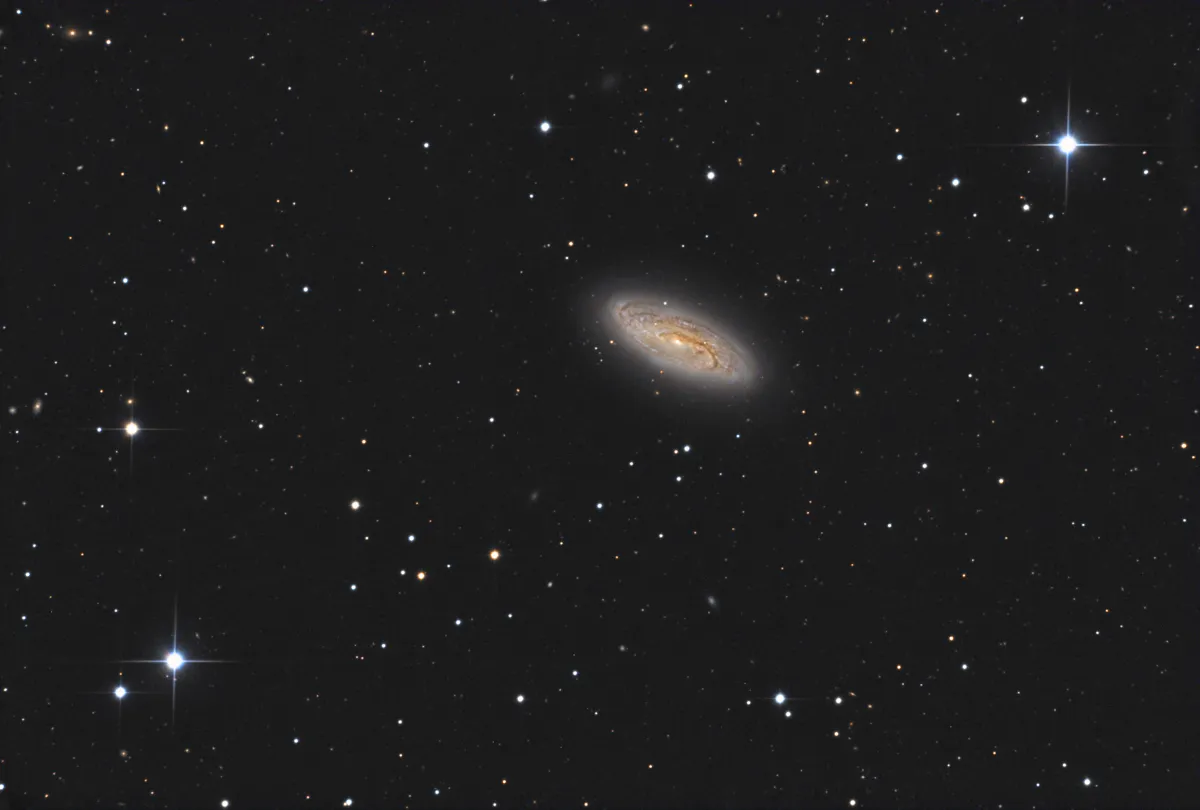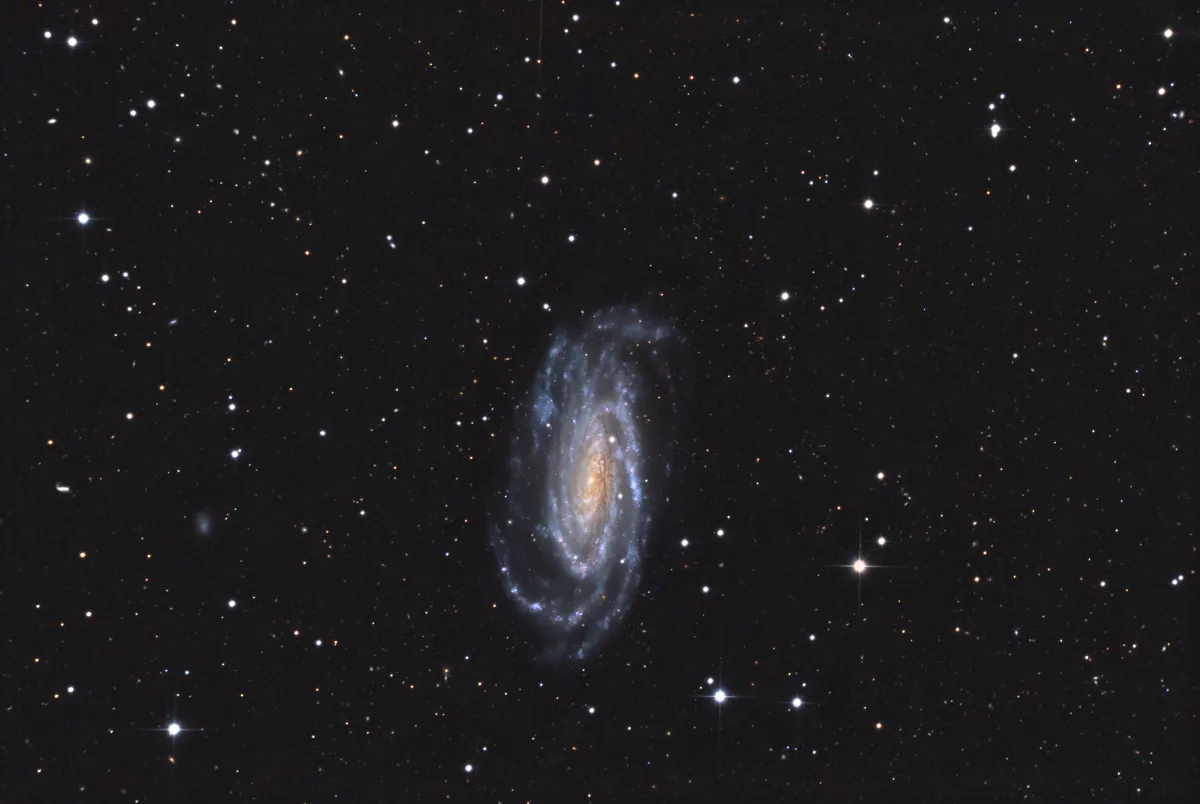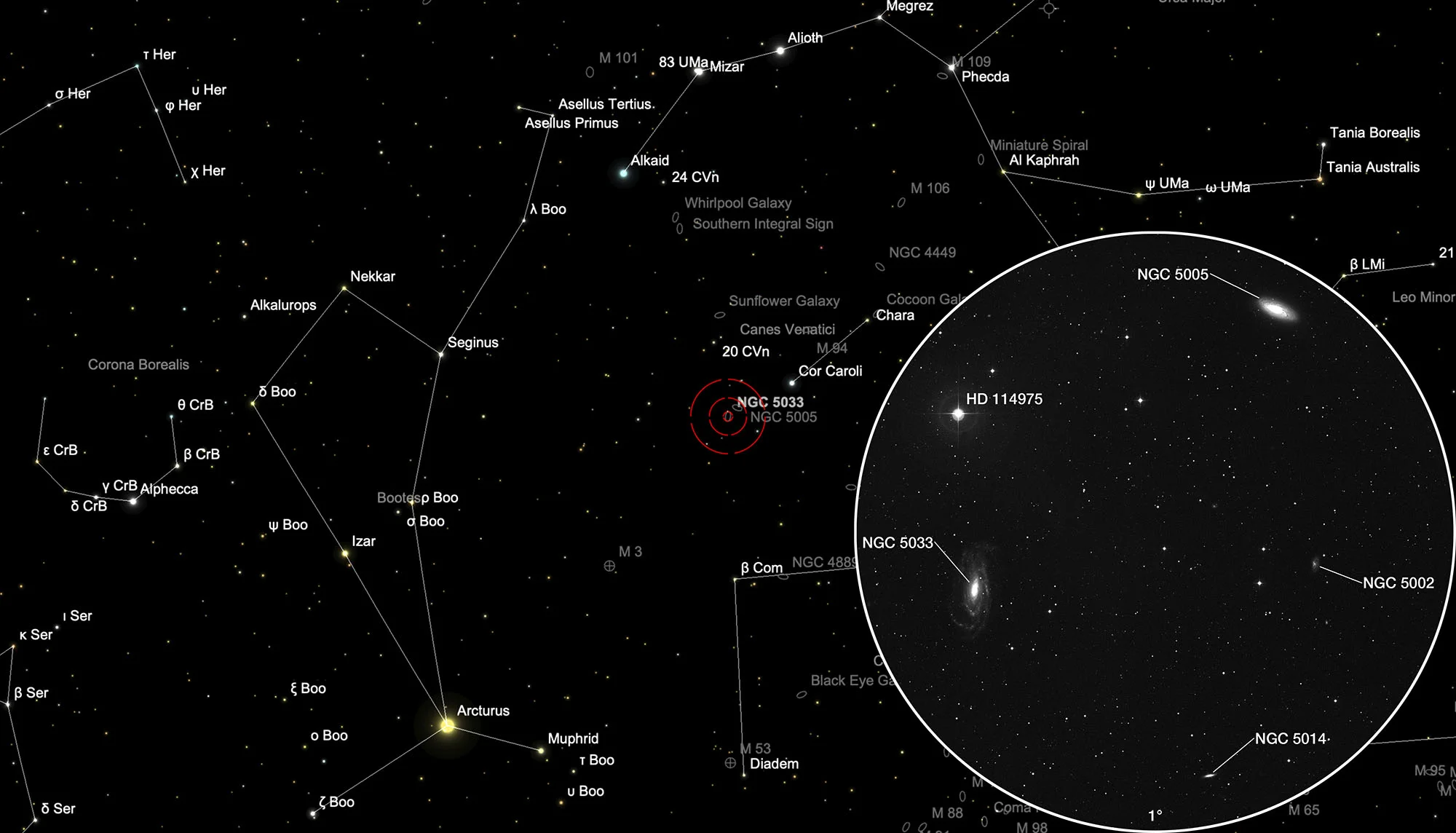Galaxies NGC 5005, NGC 5033


Object Description
The three galaxies NGC 5005, NGC 5014 and NGC 5033 were discovered on 1 May 1785 by the German-British astronomer William Herschel with his self-built 18.7" f/12.8 reflecting telescope in Slough, England. The small galaxy NGC 5002 was not discovered until 80 years later on 27 April 1865 by the German astronomer Heinrich Louis d'Arrest with the 11" f/17.5 Merz refractor at the Copenhagen Observatory. [196, 277]
| Name | RA | Dec | Type | bMag | vMag | B-V | SB | Dim | PA | z | D(z) | MD | Dreyer Description | Identification, Remarks |
|---|---|---|---|---|---|---|---|---|---|---|---|---|---|---|
| NGC 5002 | 13 10 38.2 | +36 38 03 | Gx (SBm) | 14.4 | 13.8 | 0.6 | 14.2 | 1.7 × 1 | 173 | 0.003639 | 15.37 | vF, pL, E, * 13 att, n | GC 5721; UGC 8254; MCG 6-29-51; CGCG 189-34; KUG 1308+368 | |
| NGC 5005 | 13 10 56.1 | +37 03 31 | Gx (SBbc) | 10.6 | 9.8 | 0.8 | 12.6 | 5.8 × 2.9 | 65 | 0.003156 | 13.33 | 19.870 | vB, vL, vmE 66°, vsbMN | WH I 96; h 1547; GC 3437; UGC 8256; MCG 6-29-52; CGCG 189-35; IRAS 13086+3719 |
| NGC 5014 | 13 11 31.4 | +36 16 54 | Gx (Sa) | 13.5 | 12.9 | 0.6 | 12.7 | 1.6 × 0.5 | 102 | 0.003756 | 15.87 | 22.800 | pF, S, E, psbM | WH II 414; h 1551; GC 3444; UGC 8271; MCG 6-29-55; MK 449; IRAS 13092+3632; CGCG 189-37; KUG 1309+365 |
| NGC 5033 | 13 13 28.0 | +36 35 36 | Gx (Sc) | 10.8 | 10.2 | 0.6 | 14.4 | 10.7 × 5 | 170 | 0.002919 | 12.33 | 19.640 | vB, pL, E 167°, smbMvBN, * np | WH I 97; h 1564; GC 3459; UGC 8307; MCG 6-29-62; CGCG 189-43; IRAS 13111+3651 |
Finder Chart
The galaxies NGC 5005 and NGC 5033 are in the constellation Canes Venatici. The best observation time is December to September, when it is highest at night.
